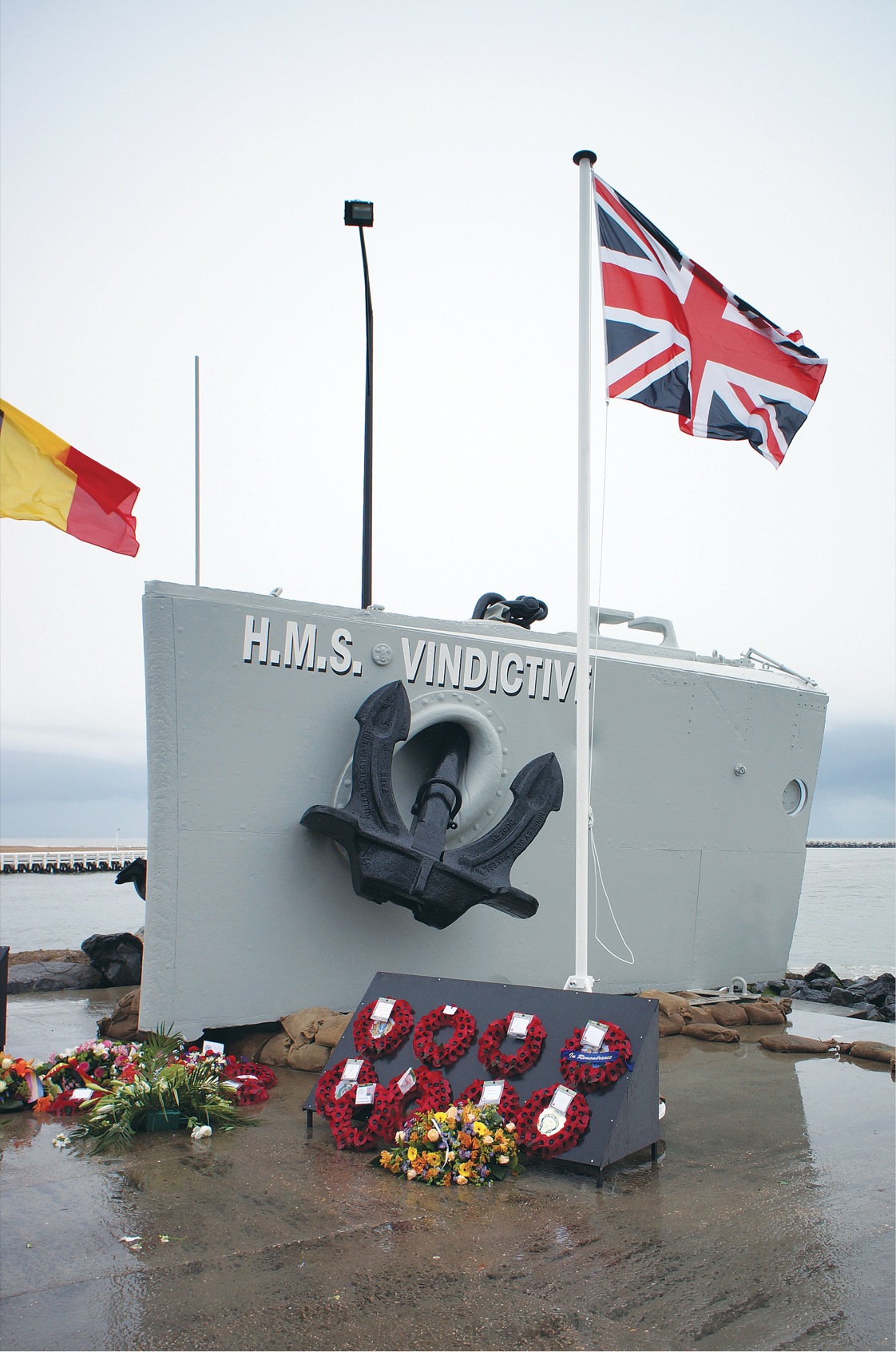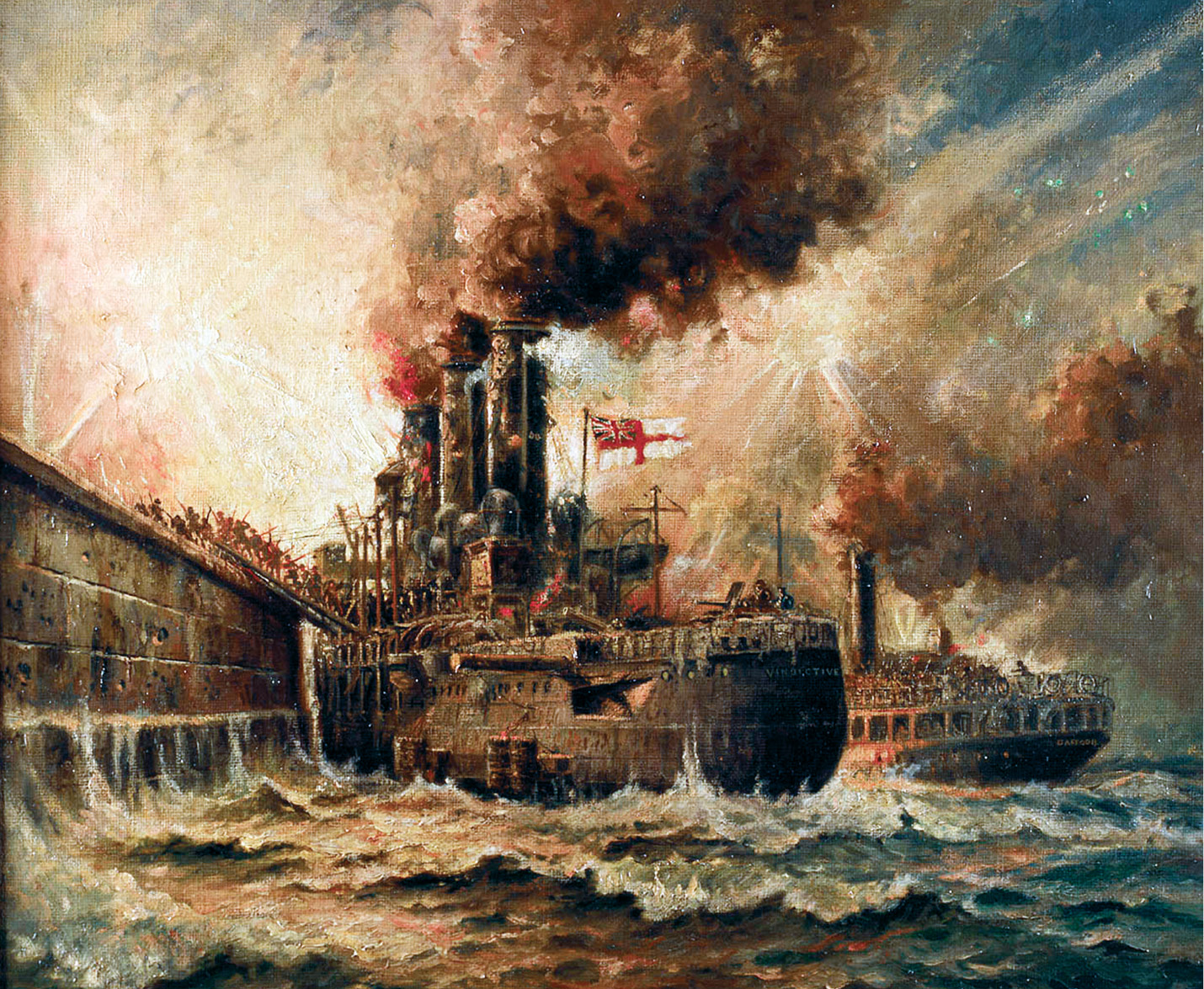90
HMS Vindictive
Country of origin: United Kingdom
Date of construction: 1897
Location: Ostend harbor, Ostend, Belgium

IN APPRECIATING THE military reasons which directed the . . . blocking of Zeebrugge, it is desirable to recall to mind the general naval situation at the beginning of 1918. Briefly stated, the German High Seas Fleet was contained . . . whilst German submarines were engaged on vast operations, having for their object the stoppage of the trade of Great Britain. . . . In the face of such an attack, the aim of Great Britain was either to destroy the enemy submarines, or, failing destruction, to prevent their egress from their bases. . . . It was with this military object that plans for the blocking of Zeebrugge were initiated.
Admiral of the Fleet David, 1st Earl Beatty, 1921
The British had tried many ways of ensuring that the German submarines—based too close for comfort to British ports on the coast of Flanders—were kept bottled. The Germans had established their submarine base inland, close to Bruges and connected by canals to the sea at Zeebrugge and Ostend. The Royal Navy had tried to bombard the lock gates without success, and with the submarine war telling heavily upon the British merchant trade, it was necessary to take direct action. That action involved simultaneous attacks on the harbors at Zeebrugge and Ostend, attacks that would remove the threat by blocking the channels using old ships that were specially prepared so that they could not easily be removed. This, it was hoped, would ram home the stopper into the bottle and remove much of the U-boat threat.
Zeebrugge was the larger target—it had a wider channel and was a greater threat. It was also heavily defended, with a garrison of 1,000 men stationed on the huge curving “mole” that protected the harbor entrance, which was equipped with a battery of guns that posed a direct threat to any attacking force. To take on the harbor, the navy would need to ensure that its blockships were guided into position, while simultaneously assaulting the mole, its battery, and its connecting bridges. The attack on Zeebrugge and Ostend was launched on April 23, 1918—St. George’s Day.
The bow of HMS Vindictive stands close to Ostend harbor. With so many other monuments to the war in Belgium, until recently the Vindictive stood a little out of the limelight, rusting, perhaps not venerated as those battle monuments of the Ypres Salient. Yet the actions this memorial commemorates are every bit as significant; renovated in 2013, it has been given greater prominence.
The Vindictive was a light cruiser that was committed to the Zeebrugge raid as a means of taking on the German garrison on the masonry mole. At 29ft high, this was a formidable target. Equipped with howitzers, flamethrowers, and specially constructed gangplanks, the Vindictive operated with the shallow draft Mersey ferries the Iris and the Daffodil, both commissioned into naval service. While the Daffodil pushed the Vindictive against the mole, the Iris carried part of the naval landing party. The intention was that 200 Royal Marine Light Infantrymen would storm the gun battery, while two older submarines packed with explosives would destroy the bridge that connected the mole with the harbor. And all to let the three blockships—Thetis, Intrepid, and Iphigenia—pass through the harbor entrance to block the channel. The assault was terrifying in its intensity.
All three ships were scuttled, though the Thetis sat outside the channel. The submarines did their job—and the action of the Vindictive in the storming of the mole was held up as one of the most daring acts of the war. In all, eight Victoria Crosses were awarded for this action. And while the channel was blocked, that at Ostend remained open, for the Germans, using a ruse de guerre, moved the navigation buoys, leaving blockships grounded outside the harbor. With this channel still open, the patched-up Vindictive itself was sent to block it in a second raid at Ostend two weeks later. It only partially succeeded—but the noble ship’s bows remain today as a memorial to the men who carried out these raids in defense of the coasts of Britain from the U-boat menace.
